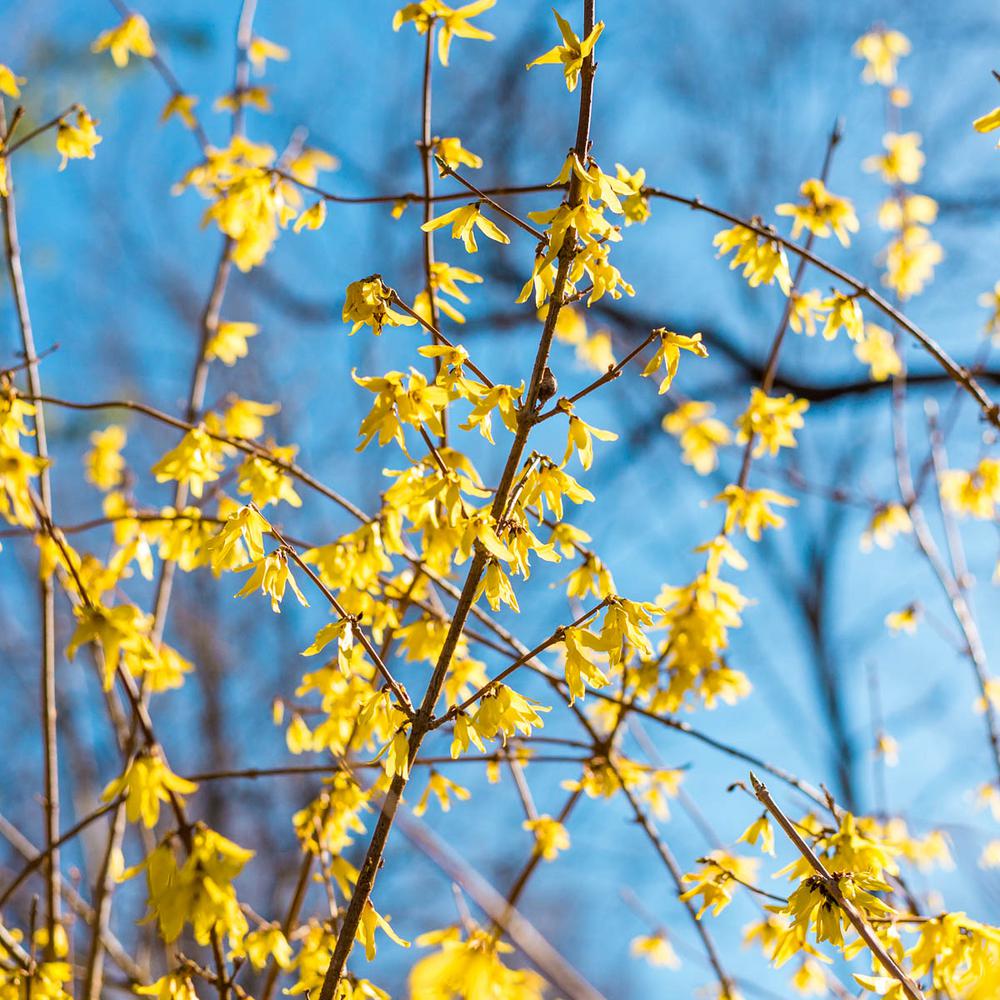As one of the first flowering plants to bloom in early spring, forsythia plants are a beautiful sign that the warmer seasons are almost here! These plants start out as a bunch of stems without much going on and are rather boring looking. After the vibrant yellow flowers bloom, these plants are absolutely beautiful! The leaves will start to sprout shortly after the flowers are growing lushly on the stem.
While some flowers come in a variety of color options, forsythia flowers are only found in one color, bright cheerful yellow. The flowers are narrow and bell shaped, each with four long, narrow petals. During rainy times, the petals drop down, making a pendant shape which protects the flower’s pollen from being washed away.
Flowers nicknamed “pink forsythia” do not actually belong to the forsythia genus of plants! However, they do have a similar plant shape, flower shape and are also one of the first flowers of spring to bloom. Flowers on these plants are white to pink in color.

Forsythia plants are shrubs that typically grow between three and nine feet tall but sometimes as tall as twenty feet. The beautiful yellow flowers unfortunately only last a couple weeks, but the flower buds for the next spring form after the flowers have dropped. The cold of winter is needed for the buds to open, but if it gets too cold the buds may die before getting the chance to open the following spring.
The oval shaped leaves of forsythia plants are toothed and have a pointed tip. After the flowers fade and fall off, the leaves become more noticeable. This deciduous shrub loses its leaves at the end of its growing season. In the fall, the leaves turn a beautiful red or yellow color before dropping off.
The flowers of these plants are pollinated by bees and other insects. Because they bloom so early, there are usually not many pollinators around.
Pollinated flowers produce an oval shaped fruit in the fall. The fruit starts out green and turns yellow, then brown. Mature capsules open to reveal two chambers filled with seeds.

There are eleven known species of forsythia and they are actually a part of the olive family, Oleaceae. Ten of the species are native to Asia and do not occur naturally in other places unless they have been cultivated. There is one species native to south-eastern Europe. Gardeners sometimes refer to these blooms as “Golden Bell.”

Forsythia plants are not poisonous and used to be traditionally used in medicine. In ancient Chinese medicine, forsythia would be used as a blood detoxifier as well as to sometimes treat headaches and fevers. After extracts were dried, they would be combined with honeysuckle to make the medicine. Other traditional uses of forsythia as medicine include viral infections like colds, ear infections, and even bronchitis.
Because the pretty yellow flowers are non-toxic, they are sometimes used as a garnish for salads or cocktails. They are typically used in small quantities because the petals taste bitter.









Leave a comment